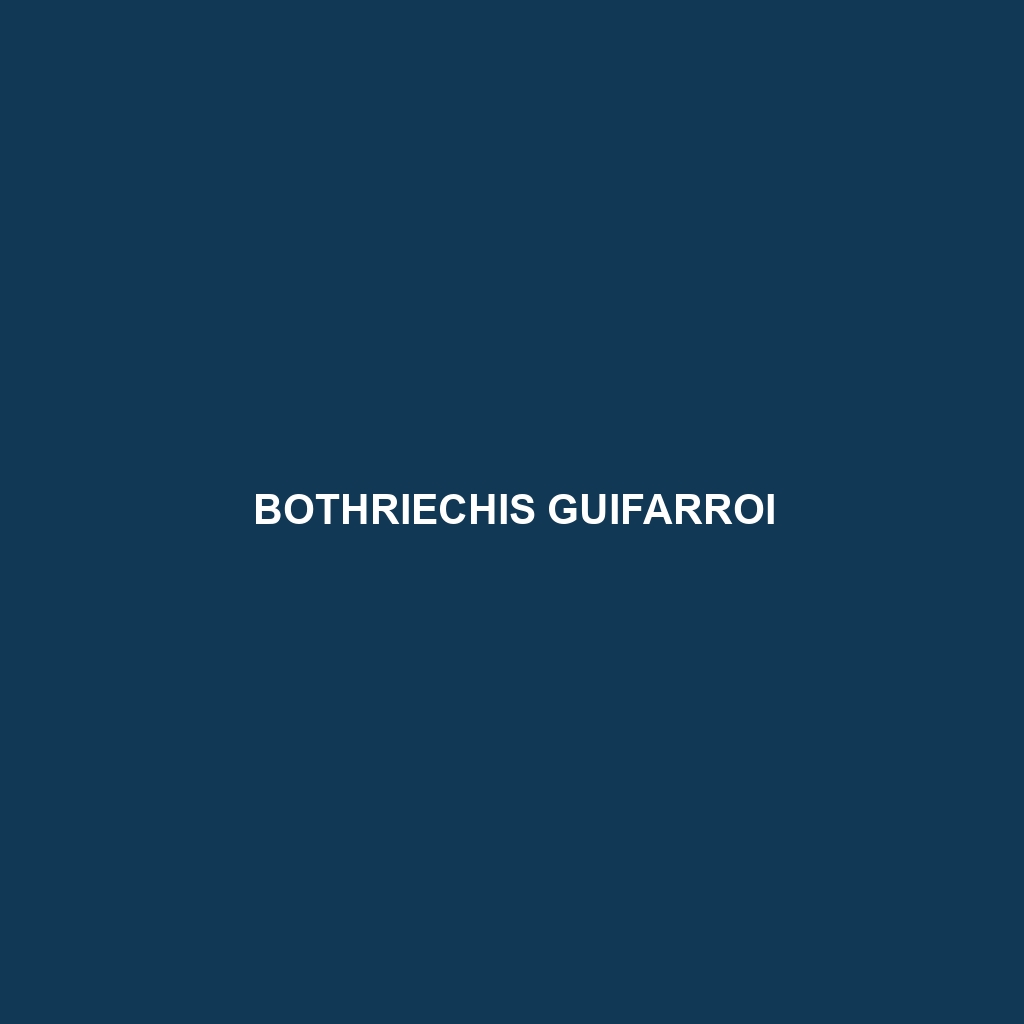Species Description: Bothriechis guifarroi
Common Name: Bothriechis guifarroi
Scientific Name: Bothriechis guifarroi
Habitat
Bothriechis guifarroi, commonly known as the Guifarro’s Palm Pit Viper, is primarily found in the humid lowland forests of Honduras. This species thrives in altitudes ranging from 900 to 2100 meters, favoring areas near streams and rivers where it can hunt and bask. The lush vegetation of its environment provides ample cover and hunting opportunities, essential for its survival.
Physical Characteristics
This striking snake typically reaches lengths of 70 to 90 centimeters and exhibits a vibrant green coloration, which allows it to blend seamlessly into its leafy surroundings. Bothriechis guifarroi has a triangular head and distinct facial pits, helping it detect temperature changes from potential prey. Its scales are notably keeled, contributing to its rugged texture, while some individuals display yellow or orange stripes along their bodies, adding to their unique appearance.
Behavior
Bothriechis guifarroi is primarily nocturnal, exhibiting most of its activity during the night when it hunts for food. These snakes are arboreal, often found resting on branches or leaves, where they utilize their cryptic coloration to remain hidden from predators and prey alike. They are known for their ambush tactics, waiting patiently for unsuspecting animals to come within striking distance.
Diet
The diet of Bothriechis guifarroi mainly consists of small mammals, birds, and amphibians. As a carnivorous species, it captures its prey using venomous fangs to subdue and digest its food. This snake’s feeding habits involve excellent camouflage and quick strikes, making it an efficient predator in its habitat.
Reproduction
Bothriechis guifarroi exhibits ovoviviparous reproduction, meaning that eggs hatch internally, and live young are born. Breeding typically occurs during the rainy season, when food is abundant. A female can give birth to 5 to 15 young at a time, which are independent from birth and must immediately find food and shelter.
Conservation Status
The current conservation status of Bothriechis guifarroi is classified as vulnerable due to habitat destruction and deforestation in its native range. Conservation efforts are essential to protect both its habitat and the species, which are threatened by agriculture and urban development.
Interesting Facts
One fascinating fact about Bothriechis guifarroi is that it possesses a unique color variation, which can sometimes lead to misidentification with other similar species. Also, it is considered a bioindicator species; thus, its presence reflects the overall health of its ecosystem.
Role in Ecosystem
Bothriechis guifarroi plays a critical role in its ecosystem as both a predator and prey. By feeding on small mammals and birds, it helps control their populations, contributing to the balance of its habitat. Additionally, it serves as a food source for larger predators, making it an integral part of the food web within its forest environment.
